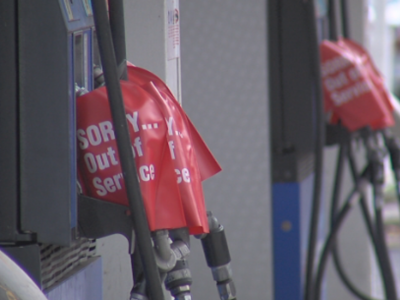What Does the Future Hold for the American Gas Station?
Legal Planet: Environmental Law and Policy 2022-01-03

Gas stations have been fixtures in our world for a century or more. There are even books of photos of picturesque gas stations, some futuristic, others quaint. We’re transitioning into a world dominated by electric vehicles. What does the future hold for these icons of the fossil fuel era?
There are now about a hundred thousand gas stations in the U.S. A majority are owned by operators with only one station, making them quintessential small businesses. They don’t actually make a lot of money selling gas. The margin over wholesale prices is about twenty cents a gallon, but the actual profit is only a fraction of that. The real money is in the convenience store inside the gas station. In other words, selling gas is in large part just a way of getting people into the store.
It’s going to take time to phase out gas powered cars even after EVs take over the new car market, which means the business of selling gas isn’t going to disappear overnight. Replacing diesel for heavy trucks may take even longer, especially on long-haul routes. That means that the gas business won’t disappear overnight, but obviously there’s going to be sharply declining demand.
Unless there are dramatic improvements in charging times, current gas stations aren’t configured for charging cars. There isn’t enough space, and cars would have to park for too long to get charged. Many people will either charge at home, at work, or in parking lots while they engage in other activities. In addition, EVs don’t need the kinds of repair and maintenance of conventional vehicles, so that function of gas stations is also likely to take a big hit.
All that means that the future of current gas stations is likely to be as convenience stores. Older stations are often on small lots that will need to be expanded for profitable stores. However, stations often sit on corner lots at major intersections, making them prime retail spots.
Redeveloping gas stations for other uses may cause another problem, however. The soil is often contaminated from leaking underground tanks and from oil and other fluids. Those sites may be governed by state and federal hazardous waste laws. EPA has a very helpful webpage about the problems posed by these sites, including possible sources of funding for clean-up. There are a number of ideas about how to avoid the brownfield problem by not breaking soil. For example, a pre-fab fulfillment center can be plopped onto a site, where people can go to pick up purchases they’ve order from Amazon or elsewhere. There are also ideas to use the spots for green space, since many people may live closer to a gas station than a park.
Still, reuse is going to be a major issue. In Canada, for instance, there are said to be thousands of former gas stations that haven’t been redeveloped because of clean-up costs. We may be able to learn from efforts there and in Norway, which is banning new fossil-fuel cars only a few years from now.
There are lessons to be drawn from the gas station example. One is about the need to deal with the leftover damage of the fossil fuel era — not just contaminated soil at gas stations, but emissions from old wells, refineries, and storage sites. We’re likely to be dealing with those problems for years after gasoline motors are gone.
Another lesson is how pervasively our society will be impacted by the energy transition, down to the neighborhood level. A lot that we take for granted as part of the landscape will be changing — in this case leaving some existing station owners stranded but creating new business opportunities for other people. As part of all those changes, gas stations as we know them seem doomed to fade into the sunset, like the livery stables of days of yore.
The post What Does the Future Hold for the American Gas Station? appeared first on Legal Planet.